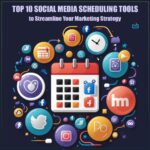Customer Satisfaction Questionnaire: Unlocking the Secrets to Product Success
In today’s hyper-competitive business landscape, understanding your customers’ satisfaction with your product is paramount. It’s not just about selling a product; it’s about delivering an experience that keeps your customers coming back for more. To achieve this, you need a comprehensive and insightful customer satisfaction questionnaire. In this article, we’ll delve deep into crafting the perfect customer satisfaction questionnaire, one that can propel your product to new heights.
Why Customer Satisfaction Matters
Before we dive into creating the questionnaire, let’s understand why customer satisfaction is so crucial. Customer satisfaction is not just a metric; it’s a barometer of your product’s performance and your business’s future. Here are some reasons why it matters:
1. Retention and Loyalty
Satisfied customers are more likely to become loyal customers. They are not only willing to make repeat purchases but also become advocates for your brand, spreading positive word-of-mouth.
2. Competitive Advantage
In a crowded marketplace, where products often seem similar, exceptional customer satisfaction sets you apart from your competitors. It becomes a unique selling point that can influence potential customers to choose your product over others.
3. Revenue Growth
Happy customers are willing to spend more. They are less price-sensitive and more open to upsells and cross-sells, directly contributing to revenue growth.
4. Feedback for Improvement
Customer satisfaction surveys provide valuable feedback. They highlight areas where your product excels and areas that need improvement. This data-driven approach can guide product development and enhancements.
Now that we’ve established the importance of customer satisfaction, let’s move on to creating an effective questionnaire.
Related Articles
Crafting Your Customer Satisfaction Questionnaire
Define Your Objectives
Before you start designing your questionnaire, it’s essential to define your objectives. What specific information are you trying to gather, and what actions do you intend to take based on the results? Some common objectives include:
1. Measuring Overall Satisfaction
Determine how satisfied your customers are with your product as a whole. This provides a broad overview of your product’s performance.
2. Identifying Pain Points
Pinpoint areas where customers may be dissatisfied or encounter difficulties with your product. This helps in targeted improvements.
3. Assessing Customer Support
Evaluate the quality of your customer support services. Happy customers often correlate with efficient support.
4. Gauging Future Intent
Understand if your customers are likely to continue using your product and if they’d recommend it to others.
Question Types
The next step is to choose the right question types for your questionnaire. Here are some question types commonly used in customer satisfaction surveys:
1. Rating Scales
Ask customers to rate their satisfaction on a numerical scale (e.g., from 1 to 5). This provides quantifiable data.
2. Multiple Choice
Present predefined options for customers to choose from. This simplifies data analysis and provides structured responses.
3. Open-Ended Questions
Include a few open-ended questions to allow customers to express their thoughts and concerns in their own words. This can yield valuable insights.
Question Wording
The wording of your questions is critical. Keep these tips in mind:
1. Keep it Clear and Concise
Ensure questions are easy to understand. Avoid jargon or technical language that might confuse respondents.
2. Use Neutral Language
Phrase questions in a way that doesn’t lead respondents towards a particular answer. Stay neutral to obtain honest feedback.
3. Avoid Double-Barreled Questions
Don’t combine multiple questions into one. Each question should focus on a single aspect of satisfaction.
Survey Length
While it’s essential to gather comprehensive data, keep your survey reasonably short. Long surveys can lead to respondent fatigue and lower completion rates.
Pre-Testing
Before launching your questionnaire to a broader audience, conduct pre-testing with a small group. This helps identify any ambiguities or issues with the questions.
Data Analysis
Once you’ve collected responses, it’s time to analyze the data. Look for trends, patterns, and correlations. Identify areas that require immediate attention and areas where you excel.
Taking Action
Collecting data is just the beginning. To truly benefit from your customer satisfaction questionnaire, you must act on the insights gained. Implement changes, address pain points, and continuously strive to enhance the customer experience.
Example of Customer Satisfaction Questionnaire on Financial Services.
Section 1: General Information
- How long have you been a customer of our financial institution?
- Less than 6 months
- 6 months to 1 year
- 1 to 3 years
- Over 3 years
- Which type of financial services do you primarily use with our institution? (Select all that apply)
- Checking and savings accounts
- Loans (e.g., personal, mortgage, auto)
- Credit cards
- Investment services (e.g., stocks, bonds)
- Online banking/mobile app
Section 2: Service Quality
- How satisfied are you with the overall service quality of our financial institution?
- Very satisfied
- Satisfied
- Neutral
- Dissatisfied
- Very dissatisfied
- How would you rate the courtesy and professionalism of our staff?
- Excellent
- Good
- Average
- Poor
- Very poor
Section 3: Account Management
- Are you satisfied with the accessibility and convenience of our branch/ATM network?
- Very satisfied
- Satisfied
- Neutral
- Dissatisfied
- Very dissatisfied
- How would you rate the ease of managing your accounts online or through our mobile app?
- Very easy
- Easy
- Neutral
- Difficult
- Very difficult
Section 4: Communication
- Do you find our communication regarding account statements and updates clear and informative?
- Very clear and informative
- Clear and informative
- Neutral
- Unclear
- Very unclear
- How satisfied are you with our responsiveness to your inquiries or concerns?
- Very satisfied
- Satisfied
- Neutral
- Dissatisfied
- Very dissatisfied
Section 5: Financial Products
- Have you used any of our financial products (e.g., loans, credit cards)? If yes, please rate your experience.
- Yes, and I’m very satisfied
- Yes, and I’m satisfied
- Yes, but I’m neutral
- Yes, but I’m dissatisfied
- No, I haven’t used any financial products
Section 6: Problem Resolution
- Have you encountered any issues or problems with our financial services? If yes, please describe your experience. (Open-ended question)
- How satisfied are you with the way we handle and resolve problems or complaints?
- Very satisfied
- Satisfied
- Neutral
- Dissatisfied
- Very dissatisfied
Section 7: Security and Privacy
- Do you feel that your personal and financial information is adequately protected by our institution?
- Strongly agree
- Agree
- Neutral
- Disagree
- Strongly disagree
- How satisfied are you with the security measures we have in place (e.g., two-factor authentication)?
- Very satisfied
- Satisfied
- Neutral
- Dissatisfied
- Very dissatisfied
Section 8: Future Recommendations
- Would you recommend our financial institution to friends or family?
- Definitely yes
- Probably yes
- Not sure
- Probably not
- Definitely not
- What improvements or new services would you like to see from our financial institution in the future? (Open-ended question)
Section 9: Additional Comments
- Is there anything else you would like to share about your experience with our financial institution? (Open-ended question)
- How can we better meet your financial needs and expectations? (Open-ended question)
Section 10: Demographic Information
- Age:
- Under 18
- 18-24
- 25-34
- 35-44
- 45-54
- 55-64
- 65 or over
- Gender:
- Male
- Female
- Non-binary
- Prefer not to say
- Income Level:
- Under Rs. 25,000
- Rs. 25,000 – Rs. 50,000
- Rs. 50,001 – Rs. 75,000
- Rs. 75,001 – Rs. 100,000
- Over Rs. 100,000
Conclusion
In a competitive business environment, understanding and improving customer satisfaction is non-negotiable. A well-crafted customer satisfaction questionnaire, like the one we’ve outlined here, can be a powerful tool to elevate your product’s success. Remember that it’s not just about asking the questions; it’s about using the answers to drive positive change.
So, if you want your product to stand out, make customer satisfaction a priority. Invest in creating a thoughtful questionnaire, gather valuable insights, and watch your product soar to new heights.




